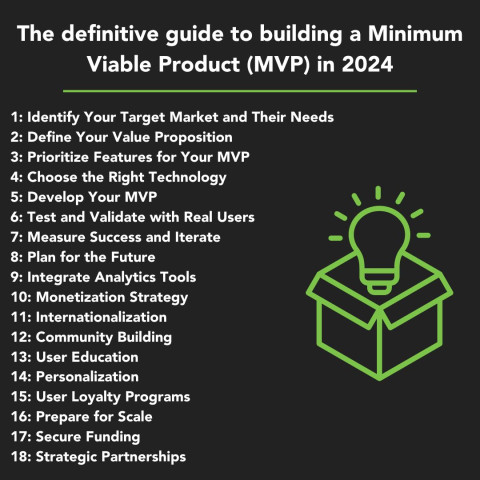Microservices Architecture and Bespoke Software: A Comprehensive Guide
In today’s fast-paced digital landscape, businesses are under constant pressure to innovate, scale, and adapt to changing market demands. Traditional monolithic software architectures often struggle to keep pace, leading to inefficiencies and bottlenecks. This is where Microservices architecture, coupled with Bespoke Software development, comes into play—a powerful combination that offers the flexibility, scalability, and customisation needed to stay ahead in a competitive environment.
In this comprehensive guide, we’ll explore the intricacies of Microservices architecture, delve into the benefits of Bespoke Software, and provide real-world examples to illustrate how these technologies can transform your business.
1. What is Microservices Architecture?
Microservices architecture is an approach to software development where a large application is divided into smaller, independent services that communicate with each other through APIs. Each microservice is designed to perform a specific business function, such as user authentication, payment processing, or product catalogue management. Unlike monolithic architectures, where all components are tightly coupled, microservices are loosely coupled and can be developed, deployed, and scaled independently.
Key Characteristics of Microservices Architecture:
a. Modularity: Each microservice is a self-contained unit responsible for a specific business capability, making the system more manageable and easier to understand.
b. Decentralised Data Management: Microservices typically manage their own databases, allowing for greater flexibility and the use of different technologies suited to each service’s needs.
c. Independent Deployment: Microservices can be deployed independently, enabling continuous integration and continuous deployment (CI/CD) practices. This allows for faster release cycles and more frequent updates.
d. Scalability: Individual microservices can be scaled horizontally based on demand. For example, if the payment processing service experiences high traffic, it can be scaled up without affecting other parts of the application.
e. Resilience: The failure of one microservice does not necessarily bring down the entire system. This isolation of failures enhances the overall resilience of the application.
f. Technology Diversity: Different microservices can be built using different programming languages, frameworks, or databases, providing the freedom to choose the best tools for each task.
2. The Role of Bespoke Software in Microservices Architecture
Bespoke Software is custom-built software tailored to the unique needs of a business. When combined with Microservices architecture, Bespoke Software enables businesses to create highly specialised solutions that precisely align with their operational requirements. This combination provides a robust framework for innovation, allowing businesses to rapidly adapt to changing market conditions and customer demands.
3. Benefits of Combining Microservices Architecture with Bespoke Software:
Customisation to Business Needs:
Off-the-shelf software solutions often come with generic features that may not fully align with your business processes. Bespoke Software allows you to build microservices tailored to your specific needs, ensuring that each service performs exactly as required. For instance, a retail company might need a custom-built inventory management system that integrates seamlessly with its supply chain, providing real-time visibility and control.
Enhanced Flexibility and Scalability:
Bespoke microservices are designed with your future growth in mind. As your business evolves, you can easily scale individual services or add new ones without disrupting the entire system. For example, an e-commerce platform can scale its order processing service to handle increased traffic during peak shopping seasons while keeping other services, like user accounts or product catalogues, unaffected.
Improved Performance and Efficiency:
By developing microservices that are fine-tuned to your specific workflows, Bespoke Software ensures optimal performance and efficiency. Each service can be built using the most suitable technology stack, ensuring that your application runs smoothly even under heavy load. For instance, a streaming service like Netflix uses bespoke microservices for content delivery, recommendation engines, and user management, ensuring a seamless viewing experience.
Security and Compliance:
Bespoke Software development allows you to integrate security measures and compliance protocols directly into your microservices architecture. This is particularly important for industries like healthcare and finance, where data security and regulatory compliance are critical. A bespoke patient management system, for example, can be built to comply with HIPAA regulations, ensuring that sensitive patient data is handled securely.
Cost Efficiency:
While the initial investment in Bespoke Software may be higher, the long-term benefits often outweigh the costs. By building only the features you need, you avoid the licensing fees and unnecessary functionalities that come with off-the-shelf solutions. Additionally, the ability to scale individual microservices on-demand helps optimise resource allocation, reducing overall operational costs.
4. Real-World Examples of Microservices Architecture in Action
To better understand how Microservices architecture can be applied in the real world, let’s explore some examples from leading companies:
Netflix: Pioneering the Microservices Approach
Netflix is one of the most prominent examples of a company that successfully transitioned from a monolithic architecture to Microservices. Faced with the challenges of scaling its platform to serve millions of users globally, Netflix adopted Microservices architecture to enhance flexibility, scalability, and resilience.
Microservices in Action:
Content Delivery: Netflix’s content delivery microservices ensure that users can stream movies and shows without interruption, even during periods of high demand.
Recommendation Engine: The recommendation engine is a microservice that analyses user behaviour and viewing history to suggest content that users are likely to enjoy.
User Management: This microservice handles user authentication, profiles, and personalisation settings, ensuring a seamless experience across devices.
By breaking down its application into hundreds of microservices, Netflix can deploy updates multiple times a day without affecting the user experience. This agility allows Netflix to continuously innovate and improve its service.
Amazon: Scaling E-Commerce with Microservices
Amazon, one of the world’s largest e-commerce platforms, uses Microservices architecture to manage its vast and complex operations. Each microservice is responsible for a specific function, such as order processing, inventory management, payment processing, or customer reviews.
Microservices in Action:
Order Processing: This microservice handles the entire order lifecycle, from checkout to delivery. It integrates with inventory and payment processing services to ensure a smooth transaction.
Inventory Management: The inventory management microservice tracks stock levels across Amazon’s global warehouses, updating in real-time as orders are placed and fulfilled.
Customer Reviews: A dedicated microservice manages the collection, moderation, and display of customer reviews, ensuring that feedback is accurately reflected on product pages.
Amazon’s use of Microservices architecture allows it to scale services independently, handle massive traffic spikes, and maintain a high level of reliability and performance.
Spotify: Delivering Music with Microservices
Spotify, the popular music streaming service, relies on Microservices architecture to deliver music to millions of users worldwide. Spotify’s platform includes microservices for managing user playlists, recommending new music, handling streaming, and processing payments.
Microservices in Action:
Recommendation Engine: Spotify’s recommendation engine microservice uses machine learning algorithms to analyse user listening habits and suggest new tracks or artists.
Streaming Service: This microservice handles the real-time delivery of music, ensuring that users can stream songs without buffering or delays.
User Playlists: A separate microservice manages user playlists, allowing users to create, update, and share their playlists seamlessly.
Spotify’s microservices architecture enables the company to continuously roll out new features and improvements without disrupting the user experience.
Uber: Real-Time Ride-Hailing with Microservices
Uber, the global ride-hailing service, uses Microservices architecture to manage its complex, real-time operations. Uber’s platform includes microservices for ride matching, fare calculation, payment processing, and driver management.
Microservices in Action:
Ride Matching: This microservice pairs riders with drivers based on location, availability, and estimated time of arrival. It operates in real-time, processing millions of requests per day.
Fare Calculation: The fare calculation microservice handles Uber’s dynamic pricing model, adjusting fares based on demand, distance, and time.
Payment Processing: A dedicated microservice manages payment transactions, ensuring secure and seamless processing for both riders and drivers.
Uber’s use of Microservices allows it to quickly deploy new features, scale operations globally, and maintain high service reliability.
5. Best Practices for Implementing Microservices Architecture with Bespoke Software
Implementing Microservices architecture with Bespoke Software requires careful planning and execution. Here are some best practices to ensure a successful implementation:

a. Start with a Clear Business Goal
Before diving into Microservices, it’s important to have a clear understanding of what you want to achieve. Identify the specific business problems you want to solve and how Microservices and Bespoke Software can address them. This clarity will guide your architecture design and development process.
b. Design for Loose Coupling
One of the key principles of Microservices architecture is loose coupling, where each service operates independently of others. This requires careful design to ensure that services can interact through well-defined APIs without becoming too dependent on one another. This loose coupling enables each service to evolve independently, facilitating faster development cycles.
c. Embrace Domain-Driven Design (DDD)
Domain-Driven Design is an approach that focuses on modelling the software based on the business domain. In a Microservices architecture, this means designing services around specific business capabilities or domains. For example, in an e-commerce platform, you might have separate microservices for payment processing, inventory management, and customer support, each aligned with a specific business function.
d. Implement Robust API Management
APIs are the glue that holds microservices together, enabling them to communicate and share data. Implementing robust API management practices is crucial for ensuring secure, reliable, and scalable interactions between services. This includes API versioning, monitoring, security (e.g., OAuth, JWT), and documentation.
e. Focus on Data Management and Consistency
In a Microservices architecture, data is often distributed across multiple services, each managing its own database. This decentralised approach can lead to challenges with data consistency and integrity. It’s important to carefully design your data management strategy, considering eventual consistency, distributed transactions, and data synchronisation techniques.
f. Automate Testing and Deployment
Automation is key to managing the complexity of Microservices architecture. Implement continuous integration and continuous deployment (CI/CD) pipelines to automate the testing, deployment, and monitoring of microservices. Automated testing ensures that each service works as expected, while automated deployment allows you to roll out updates quickly and safely.
g. Monitor and Manage Microservices
Monitoring is essential for maintaining the health and performance of a Microservices architecture. Use monitoring tools to track the performance, availability, and health of each microservice. Implement logging, tracing, and alerting mechanisms to detect and resolve issues before they impact users.
h. Invest in Security and Compliance
Security should be a top priority when implementing Microservices, especially when dealing with sensitive data. Implement security measures at every layer, including API security, data encryption, authentication, and access control. Ensure that your architecture complies with relevant regulations and industry standards.
6. Challenges to Consider and Overcome
While the benefits of Microservices architecture and Bespoke Software are substantial, businesses should also be aware of potential challenges:
- Complexity in Management
Managing a large number of microservices can be complex, especially when it comes to orchestrating interactions between services, monitoring performance, and ensuring consistent security practices. Businesses need to invest in robust DevOps practices, automated testing, and monitoring tools to manage this complexity effectively.
- Data Consistency
With decentralised data management, ensuring data consistency across microservices can be challenging. Businesses must carefully design their data architecture and consider eventual consistency models or distributed transactions to maintain integrity across the system.
- Initial Development Costs
The initial development of a bespoke microservices architecture can be more costly than implementing an off-the-shelf solution. However, these costs are often offset by the long-term benefits of scalability, flexibility, and reduced maintenance expenses.
7.The Future is Modular and Tailored

In today’s competitive and rapidly changing business environment, the combination of Microservices architecture and Bespoke Software offers a clear path to success. By leveraging these approaches, businesses can build flexible, scalable, and resilient systems that are perfectly aligned with their unique needs.
As more businesses recognise the value of modular, tailored software, we can expect to see an increasing shift toward microservices and bespoke development. This trend will drive innovation, improve customer experiences, and enable businesses to adapt quickly to whatever the future holds.
Are you ready to transform your business with Microservices architecture and Bespoke Software? Let’s explore how these cutting-edge approaches can be tailored to your specific needs and help you achieve your business goals so contact us today:

Mailchimp Alternatives Guide 2025
Is Mailchimp still the best FOR EMAIL MARKETING? Or are UK businesses find...
5 min read

The Hidden Cost of Poor System Integration
Why Poor Integration Between Systems Is Holding Your Business Back And How...
8 min read

Admin Overload: The Silent Business Killer
The cost of manual, repetitive admin tasks In countless small and medium-s...
3 min read


